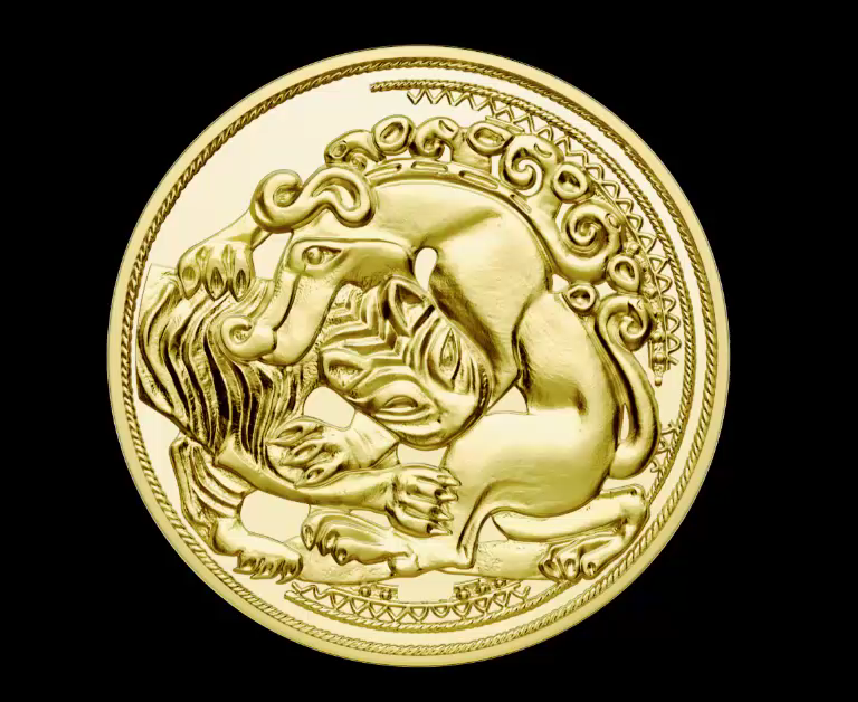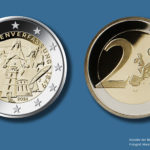
2022 €100 gold of scythes from the Austrian Mint
- October 12, 2022
- by
- Pierre

This series tells of the value and magic of gold in the advanced civilizations of the past. 2500 years before our time, the nomadic Scythians roamed the Eurasian steppes. Inspired by the Scythian treasure, this very special piece combines the joy of collecting gold with curiosity about ancient cultures.
In the center of the obverse is a loosely designed portrait of a Scythian rider galloping into the coin image from the right. The rider and horse are partly covered with an ornamental band. In another ornamental band – it can be seen in the background – a cauldron, a plow and an axe are integrated.

The other side shows as the main motif a gilded centerpiece probably from the late Scythian period, which depicts an animal fight scene. The original is in the Hermitage in St. Petersburg and came from the collection of Tsar Peter I.

The animal style
From the 7th to the 3rd century B.C., the nomadic equestrian people of the Scythians populated the steppes of southern Russia and present-day Ukraine. Their life was based on mobility. With their sheep and horses, they moved from pasture to pasture.
Only beautiful gold-rich tombs, called kurgans, remain in the Eurasian steppe. Since the 19th century, archaeology has been able to study several monumental burial mounds. The funeral robes of the Scythian princes were decorated with hundreds of sewn gold plates.
In the case of women, veils and hoods also had such jewelry. These pieces, pressed from gold leaf, were often decorated figuratively, mainly with elements of the so-called animal style. Supernatural powers were attributed to the stylized animals.
Quivers, dagger handles and scabbards, decorative wooden shield disks or thick gold leaf scepter handles were also found. Neck rings and bracelets were also made of solid gold.
All of these valuables had symbolic significance, as they were a marker of the deceased’s high social status.
Numismatic quality: PROOF
Series: Gold Magic
Denomination: €100
Engravers: Helmut Andexlinger, Herbert Wähner
Diameter: 30,00 mm
Alloy: Gold 986/1000
Gold weight: 15.55g
Mintage: 20 000 coins

Sources: Monnaie d’Autriche and NUMISMAG.















